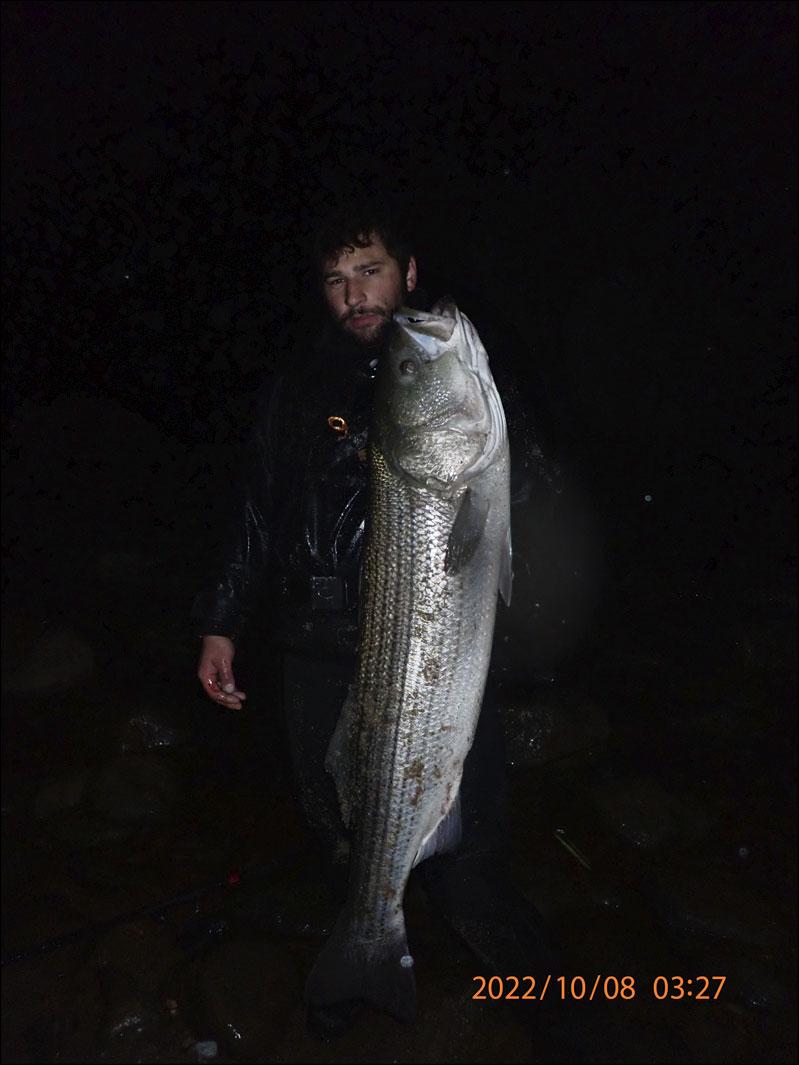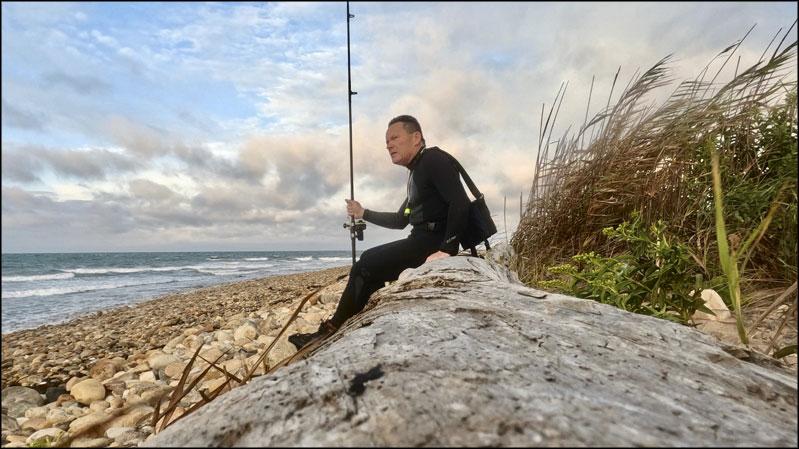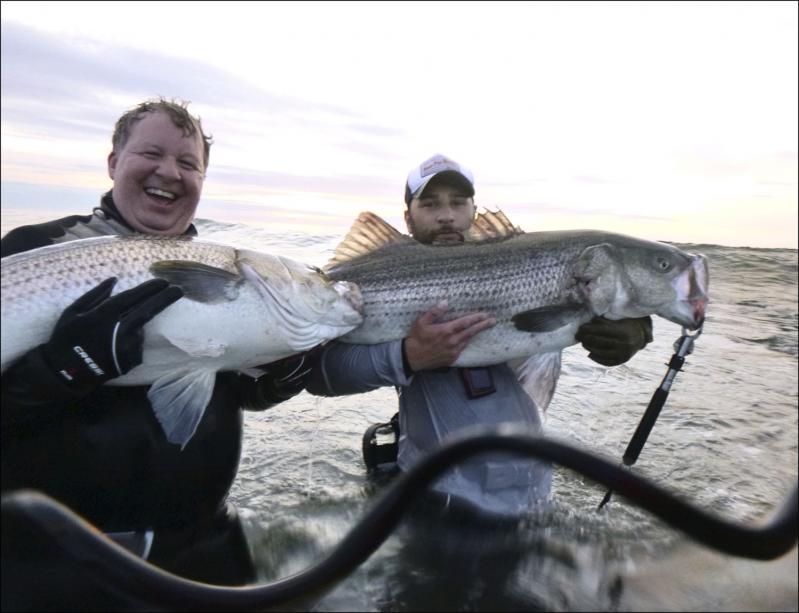Donning a wetsuit and holding an 11-foot fishing rod, Brandon Sausele side-stroked his way to a far-off ocean rock. It was the middle of the night, and Sausele had one mission: Catch the largest fish possible.
Sausele is an die-hard participant in the sport of wetsuiting, an extreme form of fishing. Sausele is a pipeline repair and coating specialist, a travel-intensive job. On days working at his shop near home, he heads out after work at 7 p.m. to make the two-hour drive to Montauk. On early nights. with work in the morning, Sausele will stay out until 1 a.m. On later nights, he might arrive at midnight and fish until sunrise.
Once he has arrived, Sausele gears up. His outfit includes a two-piece wetsuit, split-toe booties with spiked soles, and a wading belt. He also takes a knife, a 60-pound scale to weigh fish, and a lure bag. Normally, Sausele fishes alone, but sometimes he will venture out with friends who are just as dedicated as he is.

To make it out to the best fishing spots, Sausele will need to swim up to 100 yards. He usually swims sidestroke, or by “inching forward with . . . your [fishing] rod” off the bottom of the ocean. He said he is never swimming for “longer than five to 10 minutes.” He needs to judge the current and time the tide to ensure that he can go out and get back to shore safely. He navigates using landmarks including rocks that are closer to shore.
Once he’s positioned on a good rock, the game is on and the goal is big. Wetsuiters judge fish by weight, dividing them into 10-pound categories: Anything less 40 pounds is undesirable; 40-pounders are massive; 50-pounders are a career highlight, and 60-pounders are almost unheard of. Bait size plays a role. Sausele uses 20-inch eels, ones “that you [won’t] catch many small fish with.”
Wetsuiters also find fish by taking advantage of the schools fish travel in, which Sausele and other wetsuiters call “bites.” If wetsuiters can find and consistently fish off a bite, they can reel in huge numbers of fish for the duration of the bite (usually a few days to a week, according to Sausele).
While catching fish is the highlight, there are significant risks to the sport. Sausele usually finds sharks during the summer, ranging between four and nine feet. “I don’t think these are aggressive enough sharks that they’re going to mess with you while you’re swimming . . . but who knows, really,” he said.
Wetsuiters compete against one another in tournaments, the most significant being the Montauk Surfmasters, held over six weeks in the spring and eight weeks in the fall. The tournament runs on an honor system which works in part because it is open only to residents of the Town of East Hampton or invited guests. Mike Coppola, its organizer and a longtime wetsuiter, emphasized his love for the Surfmasters because it “keeps you moving . . . wanting to push yourself [for] another day.”
Coppola said there are usually “20 to 25 wetsuiters” in the tournament, and of those about a dozen are competitive. Sausele believes that there are only five or six who wetsuit at a high level today, significantly fewer than in years gone by.

John Papciak Photo
In the early ’90s, there would be “50 or 60 people in the water,” said John Papciak, an experienced wetsuiter who started in Montauk in 1989.
That might be partly due to the skyrocketing cost of accommodations in Montauk. Papciak remembers sleeping in a hotel room with a roommate for $65 a night, whereas the same room today might cost upward of $1,000. In addition, more traffic congestion has made it less attractive to drive to Montauk from points west.
Another factor: Many say the fishing these days just isn’t as good as it used to be. Papciak described how in the past, “you were pretty much guaranteed a nice fish . . . everyone is going to get a nice fish, but everything has changed.” Coppola said how “people chase reports” of good fishing, but the reports for wetsuiting today are just not as good, so people stay home.
Coppola said regulations limiting the size and number of fish people can take are “too little, too late” and that more needs to be done to protect the fishery.
Papciak agreed, saying that “it’s just not going to be enough.”
“If the fishing gets good, people will come,” Papciak said. “Some of them will find a way to spend the money at the hotels. Some of them will sleep in their trucks, even if it risks a ticket.”
—
Benjamin Shapiro was a participant in the 2025 East Hampton Star Summer Academy.

